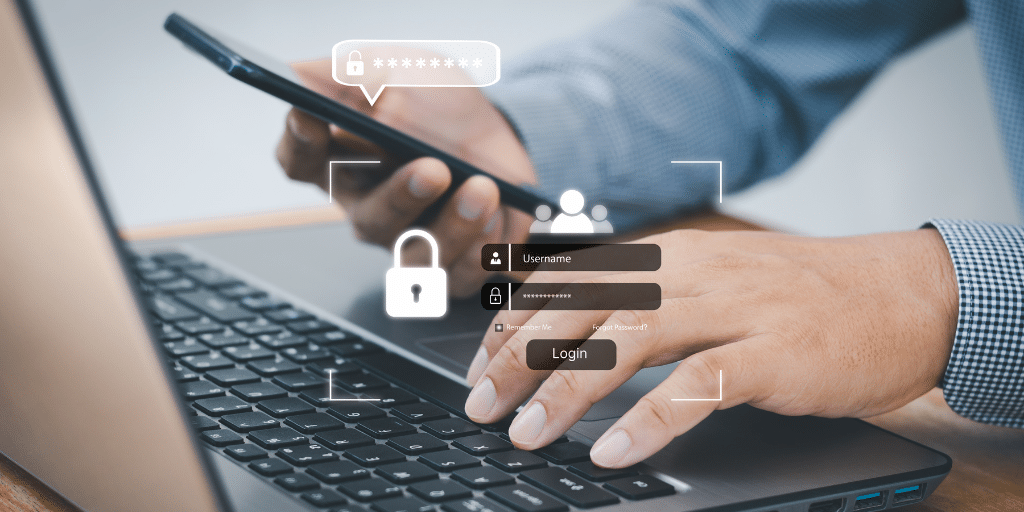Multi-Factor Authentication: A Vital Layer of Protection

Multi-factor authentication (MFA) is an additional layer of protection for data and accounts. In today’s world full of cybercriminals, it is no longer a luxury – it’s a necessity. As cybercriminals become more sophisticated, relying on just a password to protect your data is like leaving the door to your most valuable assets unlocked. MFA adds an important layer of defense, requiring multiple forms of verification to keep your sensitive information secure.
If you’re still relying solely on a single password to safeguard your data, you may not fully grasp the insidious nature and complex creativity of today’s cybercriminals.
Discover how implementing MFA can serve as a formidable barrier against unauthorized access and why it’s a simple yet powerful tool that every individual and business should employ.
What is Multi-Factor Authentication?
Multi-factor authentication, or MFA, verifies a user’s identity by requiring them to provide at least two verification factors before gaining access. This multi-layered security method greatly reduces the risk of unauthorized access and significantly enhances the overall security of your data and accounts.
Different Multi-Factor Authentication (MFA) Factors
Common MFA factors are text and email verification.
When you enter your password to access an account, you’re prompted to verify your identity with a time-sensitive code sent via text or email. Typically, you have about 15 minutes to enter the code before it expires. Once you enter that one-time code, you’ll gain access to your account.
Some newer MFA factors being used include fingerprints, iris or face scans, and other biometric data. These newer methods are now commonly available on smartphones. Rather than entering a code, biometric MFA uses your fingerprint or another biometric scan to verify your identity.
Why Use MFA?
MFA defends against unauthorized access and protects your data by requiring more than just your password.
If a hacker discovers your login credentials, they could access your account without MFA’s additional verification step. The multi-factor authentication acts as an extra firewall that safeguards your data.
Hackers improve their methods every day. If you rely solely on a single password to protect your accounts and data, you’re making it easier for cybercriminals to access and steal your information.
Mass Access with One Password
Think about your Google or Outlook account. With just your password, you can access your email, calendar, YouTube, and any web apps that you’ve connected.
If a hacker gains access to your email and password, they could access everything. If they know of other accounts you hold, like your bank account or legal software, they could even reset your passwords since they have control of your email.
The vulnerabilities here have become more recognized, and as a result, MFA is becoming increasingly common and sometimes required.
Implement MFA for Compliance Purposes
If you’re not convinced about implementing MFA for your accounts, compliance requirements might change your mind.
Compliance standards like GDPR and NIST require sophisticated security policies, and MFA plays a significant role in meeting these obligations.
Look into your state and local compliance requirements to ensure you are following any applicable rules and regulations, especially when running a law practice.
Facing Password and MFA Fatigue
Passwords and MFA can be tiring, leading to potential complacency.
While there are no tricks to prevent fatigue, educating yourself and your team about cybersecurity threats can serve as a strong motivator. Understanding the consequences of failing to protect your data, and the responsibility to protect your client’s privacy, can provide the necessary perspective to take security seriously.
Take the time to understand the “why” behind these measures so you’re motivated to prevent unauthorized access to your data.
The Value of the Cybersecurity Market
The global cybersecurity market is worth $173.5 billion, with the U.S. alone accounting for nearly $68 billion.
Those numbers are appealing to cybercriminals.
Law firms, with their sensitive, confidential information, are particularly attractive targets. 2023 held the record for cybersecurity breaches in the legal industry. A recent article from Comparitech revealed that law firms faced an average ransom demand of $2.5 million. Additionally, an article from Dark Reading reported that the number of legal files stolen in 2023 was more than the previous five years combined.
Consider the direction all the statistics and data on cybersecurity are pointing… More attacks and more vulnerabilities are coming and will continue to climb viciously as cybercriminals creatively attack businesses and individuals. Brace yourself and your business by taking the necessary steps to safeguard sensitive information about yourself, your business, and your clients.
Wrapping up
If you are not using multi-factor authentication for all your accounts, consider this as your reminder to get them set up. MFA is an extra layer of security that prevents unauthorized access to your accounts and reduces the risk of identity theft.
Implement MFA for all your business accounts and profiles. Standardize and enforce its use within your law firm.
Today’s cybersecurity threats require vigilance. Recognize the risks and take necessary steps to protect your information with the simple yet effective method of multi-factor authentication.
More Articles
Cyber Liability vs. Data Breach Insurance: Key Differences to Know Before You Buy
Understanding the key differences between Data Breach Insurance and Cyber Liability Insurance can help you make smarter, more confident decisions. Whether you're considering standalone policies or filling gaps in your current coverage, knowing what each policy offers is important to choosing the protection that is most suited for you and your business.
Defending Against Ransomware Attacks Today
Explore the history of ransomware attacks, the tactics used today, and the proactive measures you can take to protect your law firm from this growing cyber threat.

